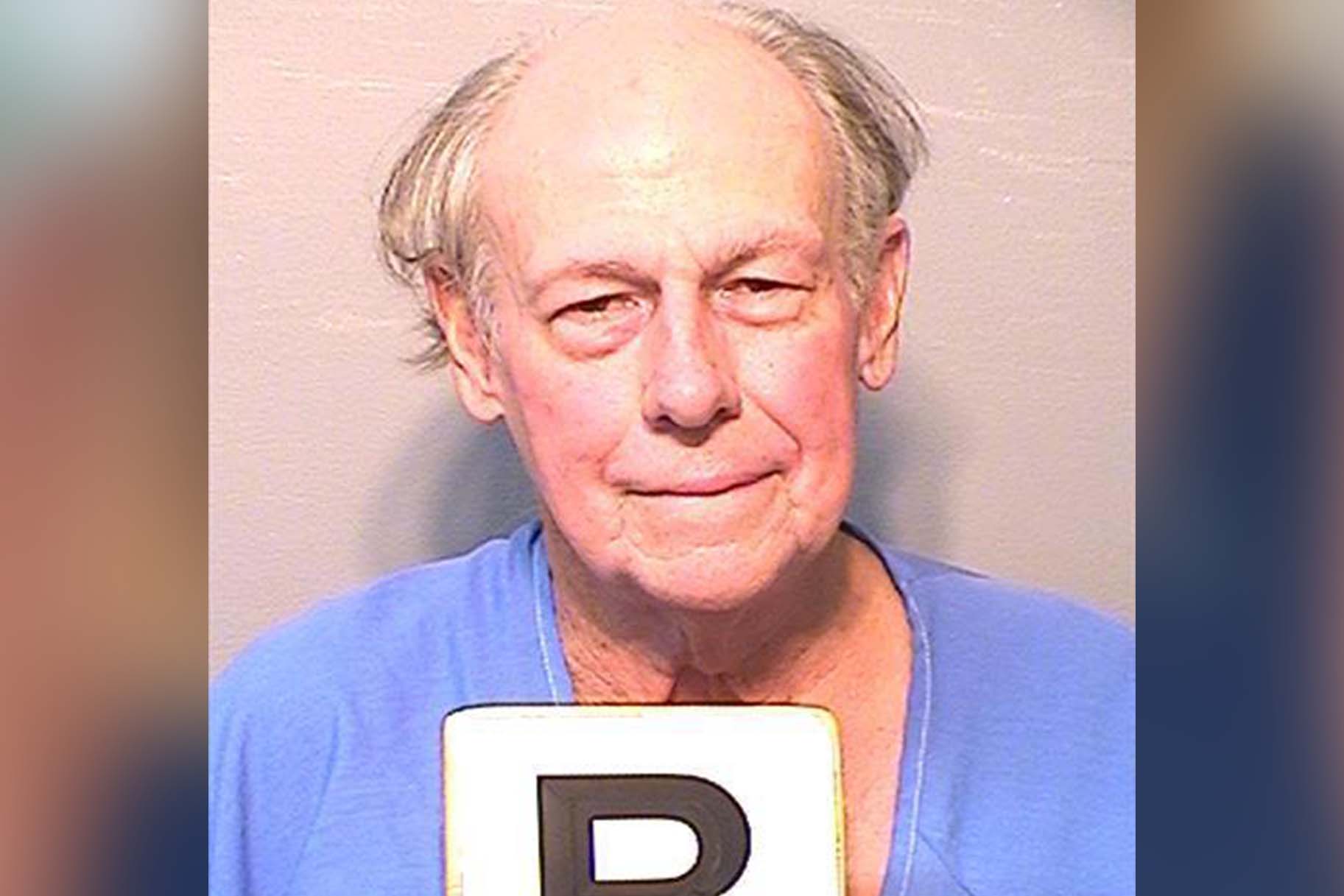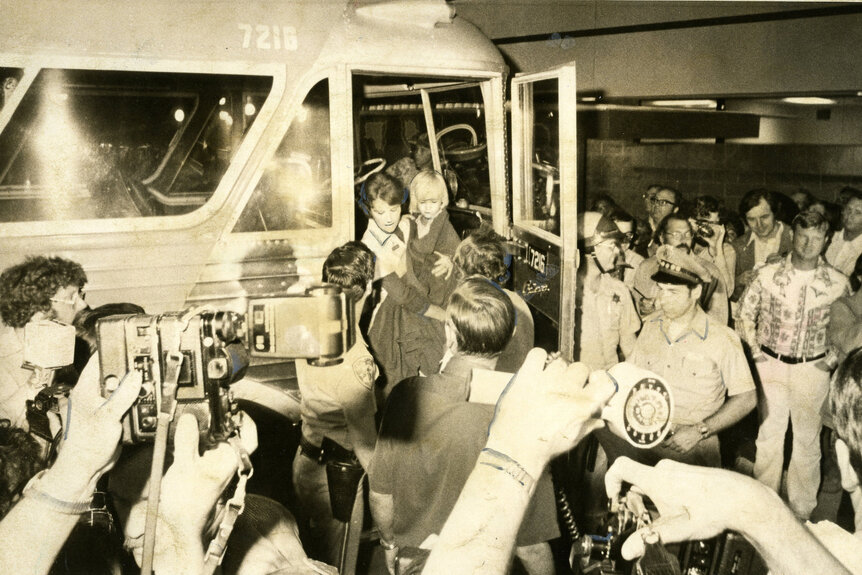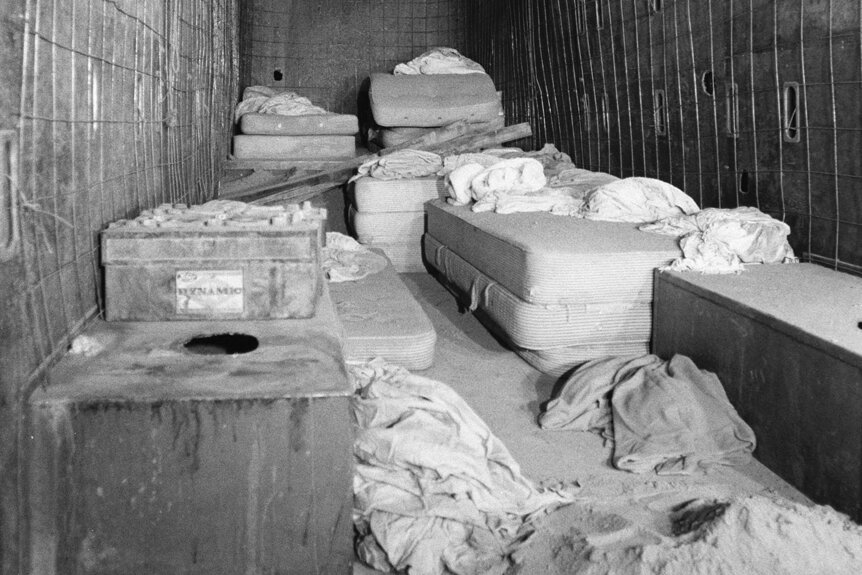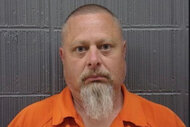Create a free profile to get unlimited access to exclusive videos, breaking news, sweepstakes, and more!
Survivors Of 1976 California School Bus Hijacking Speak Out After Kidnapper Recommended For Parole
Fred Woods, 70, was one of three men in 1976 who kidnapped and buried alive 26 children and their bus driver from Chowchilla, California in order to ransom them back to the state. He's the last one to remain in prison.

A number of former passengers who survived a 1976 armed roadside hijacking of a school bus outside San Francisco are speaking out after one of their kidnappers was recommended for parole.
Fred Woods, 70, who held 26 children and a driver hostage in a ventilated bunker after intercepting a school bus at gunpoint more than four decades ago, was recommended for release following a parole hearing on March 25, jail records show.
Woods and his accomplices, brothers James and Richard Schoenfeld, blocked a road and waved down the busload of children coming from summer school classes near Chowchilla, California, about 125 miles southeast of San Francisco, on July 15, 1976. Armed and wearing masks, the trio of hijackers boarded the bus, which was filled with 19 girls and seven boys between the ages of five and 14 years old as well as the bus driver, Ed Ray, 55.
Woods and the Schoenfeld brothers immediately ditched the bus and loaded the hostages in two vans with blacked out windows. After driving around for 10 hours, the vans arrived at a gravel quarry in Livermore, California — only about 100 miles northwest of Chowchilla — where the hijackers forced the hostages into a truck trailer they'd buried underground around 3:00 a.m..
The hijackers planned to demand a $5 million ransom from the state Board of Education but, because of all the calls coming into the Chowchilla police department, they were never able to get through to request the ransom, CBS News reported.
The brazen kidnapping was inspired by “Dirty Harry,” in which the film’s villain takes a school bus full of children hostage, according to a New York Times report. Coincidentally, Clint Eastwood’s legendary action blockbuster was reportedly largely influenced by the Zodiac killer, the elusive serial killer who threatened to blow up a bus full of kids after going on a bloody killing spree in the late sixties.
Ed Ray, a 14-year-old boy and a 10-year-old boy dug their way out of the buried trailer the following evening, Vox reported, and walked to the nearest building to seek help around 8:00 p.m.
All three hijackers were were eventually captured. They pleaded guilty in July 1977 to 27 counts of kidnapping for ransom without bodily harm in exchange for prosecutors dropping the 18 armed robbery charges, but went to trial on five counts of kidnapping with bodily harm. During a bench trial, they were convicted of those charges, too, and sentenced to life in prison without the possibility of parole.
But the appeals court overturned the kidnapping with bodily harm charges, ruling that the minor injuries and PTSD suffered by the survivors didn't meet the bar for harm under the law, CBS News reported. When the trio was re-sentenced, they became potentially eligible for parole.
Richard Schoenfeld and James Schoenfeld were granted parole in 2012 and 2015, respectively, according to corrections officials. Woods, long-considered the mastermind of the botched abduction plot, has been eligible for parole since 1982. He’s denied parole 18 times over the years, according corrections records; Vox and CBS News reported that he'd been repeatedly caught with contraband and was running two legitimate businesses from his prison cell without permission. He was last denied release in 2019.
Now, as Woods prepares to possibly walk free, news of his parole has stirred mixed emotions in the survivors who endured the violent incident more than 40 years ago.
"He caused a lot of trauma, that is true," Larry Park, who was six years old at the time of the kidnapping, told Fox News. "But at the end of the day, I would much rather hug him and love on him than hate him, because the hatred was killing me."
"Looking at the positive side of it, as I always try to do, maybe now it will all go away, and they won’t have to bring it up all the time, and we can just move on," Mike Marshall — the 14-year-old boy who helped dig the hostages out — said. “I don’t like it, but I never really felt like they were going to spend the rest of their life in prison anyway.”
During his parole hearing last week, Woods apologized to his victims and their families.
“I was 24 years old," Woods said. "Now I fully understand the terror and trauma I caused. I fully take responsibility for this heinous act.”
Dominique Banos, his attorney, also insisted Woods is "fully rehabilitated and not a danger to society."
"Throughout his 44 years in prison, Mr. Woods has participated in personal and group counseling related to responsibility, denial management and victim impact," Banos told Oxygen.com. "Now, at the age of 70, his grant of parole affirms Mr. Woods’ substantial growth, maturity and understanding in those areas, and particularly his expressed remorse for the pain and suffering he caused to those he harmed. Mr. Woods has earned his grant of parole."
Other survivors, however, still remain deeply traumatized by the 1976 school bus hijacking.
"I remember thinking, ‘I'm gonna die in here,’" Jennifer Brown Hyde told Fox News, referring to the gravel quarry’s ventilated bunker she and other survivors were confined to.
Hyde, who was then nine years old, developed anxiety of enclosed spaces as she grew into adulthood. For years, she said, she suffered recurring nightmares of the incident.
"The earliest recollection I have of them just soon after the kidnapping was that the kidnappers would line us all up, put an apple on our head and shoot and miss the apple and shoot me in the head," Hyde explained. "I would see my own funeral.”
After the parole board completes a review within 120 days, California Gov. Gavin Newsom will have 30 days to either request that the parole board further review the case or modify its recommendation. Because Woods wasn't convicted of murder, however, the governor doesn't have full authority to block Woods' parole recommendation.
Newsom has opted to block a slew of high profile paroles in recent months. This week, Newsom reversed the fifth parole recommendation of Manson Family member Leslie Van Houten; in January, he denied the release of Sirhan Sirhan, Robert F. Kennedy’s assassin.
A spokesperson for Newsom told Oxygen.com the governor is aware of Woods' parole recommendation, stating his office is now awaiting the state parole board's decision
























